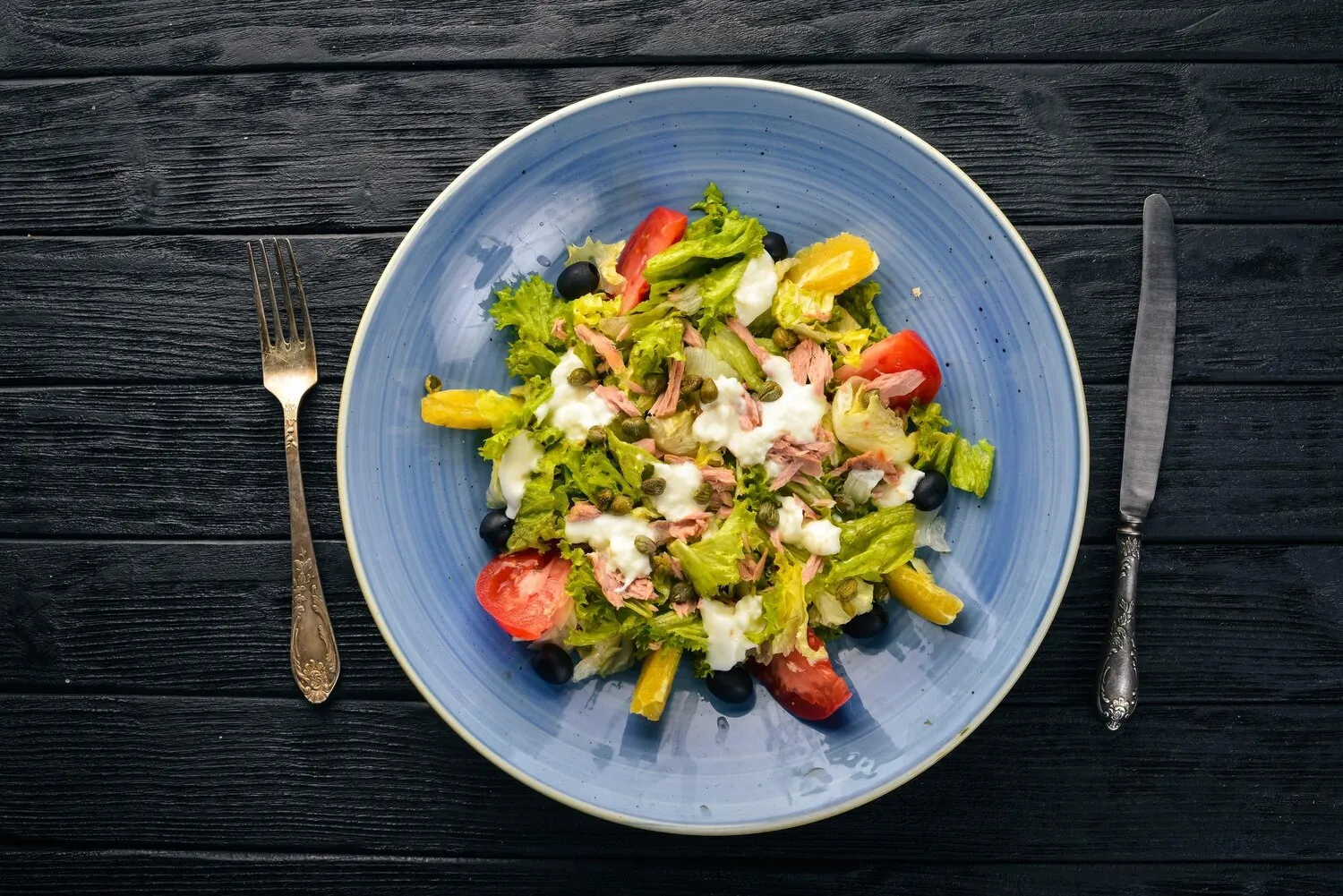
Salades
Various fresh salads.
Nutrition Facts
* The % Daily Value (DV) tells you how much a nutrient in a serving of food contributes to a daily diet. 2,000 calories a day is used for general nutrition advice.
L' O Beach
Salads have a long and varied history, dating back to ancient civilizations. Early salads were simple mixtures of leafy greens, herbs, and vegetables dressed with oil and vinegar. The Romans were known for their elaborate salads, and the practice spread throughout Europe. The availability of ingredients and culinary influences have shaped the diverse range of salads enjoyed today.
Salads are a globally recognized and culturally significant dish, reflecting local ingredients, traditions, and dietary preferences. They are often seen as a symbol of health, freshness, and culinary creativity.
Regional Variations
Different regions boast unique salad styles. For example, the Greek salad with tomatoes, cucumbers, olives, feta, and olive oil; the Niçoise salad from France with tuna, olives, eggs, and anchovies; or the Caesar salad from Mexico (though popularized in the US) with romaine lettuce, croutons, Parmesan cheese, and Caesar dressing. Each reflects local flavors and ingredients.
Dietary Considerations
Salads can be easily adapted to various dietary needs and preferences, including vegetarian, vegan, gluten-free, and low-carb diets. They are a versatile option for a light meal, a side dish, or a healthy snack.
Seasonal Ingredients
The best salads are made with fresh, seasonal ingredients. Spring and summer salads often feature light and vibrant greens, fruits, and vegetables. Fall and winter salads may incorporate heartier ingredients like root vegetables, roasted nuts, and dried fruits.
The flavors of salads are incredibly diverse, reflecting the wide array of ingredients and dressings used. Freshness and balance are key.
Salads can range from light and refreshing with crisp greens, juicy fruits, and a tangy vinaigrette, to hearty and savory with grilled meats, cheeses, and creamy dressings. Common flavor profiles include: herbaceous (parsley, cilantro, mint), tangy (vinegars, citrus), sweet (fruits, honey), savory (meats, cheeses, nuts), spicy (peppers, mustards), and umami (mushrooms, soy sauce). Textural contrasts are also important, combining crunchy vegetables with tender greens or creamy dressings.
Ingredient Quality
Use the freshest, highest-quality ingredients available. Wash and dry greens thoroughly to prevent a soggy salad. Choose ripe fruits and vegetables with vibrant colors and flavors.
Dressing Application
Dress the salad just before serving to prevent the greens from wilting. Start with a small amount of dressing and add more as needed. Toss gently to coat all the ingredients evenly.
Layering Flavors and Textures
Consider the balance of flavors and textures when creating a salad. Combine crunchy, creamy, sweet, savory, and tangy elements to create a complex and satisfying dish. Adding herbs and spices can elevate the flavor profile.
Dressing Selection
Choosing the right dressing can make or break a salad. Consider the ingredients in your salad and select a dressing that complements them. A vinaigrette is a versatile option for many salads, while creamy dressings are better suited for heartier salads with richer ingredients.
Explore additional Salad dishes and restaurants
Explore SaladDiscover top dining spots and culinary experiences in Toulon.
Explore ToulonLearn more about the food culture, restaurant scene, and culinary heritage of France.
Explore France